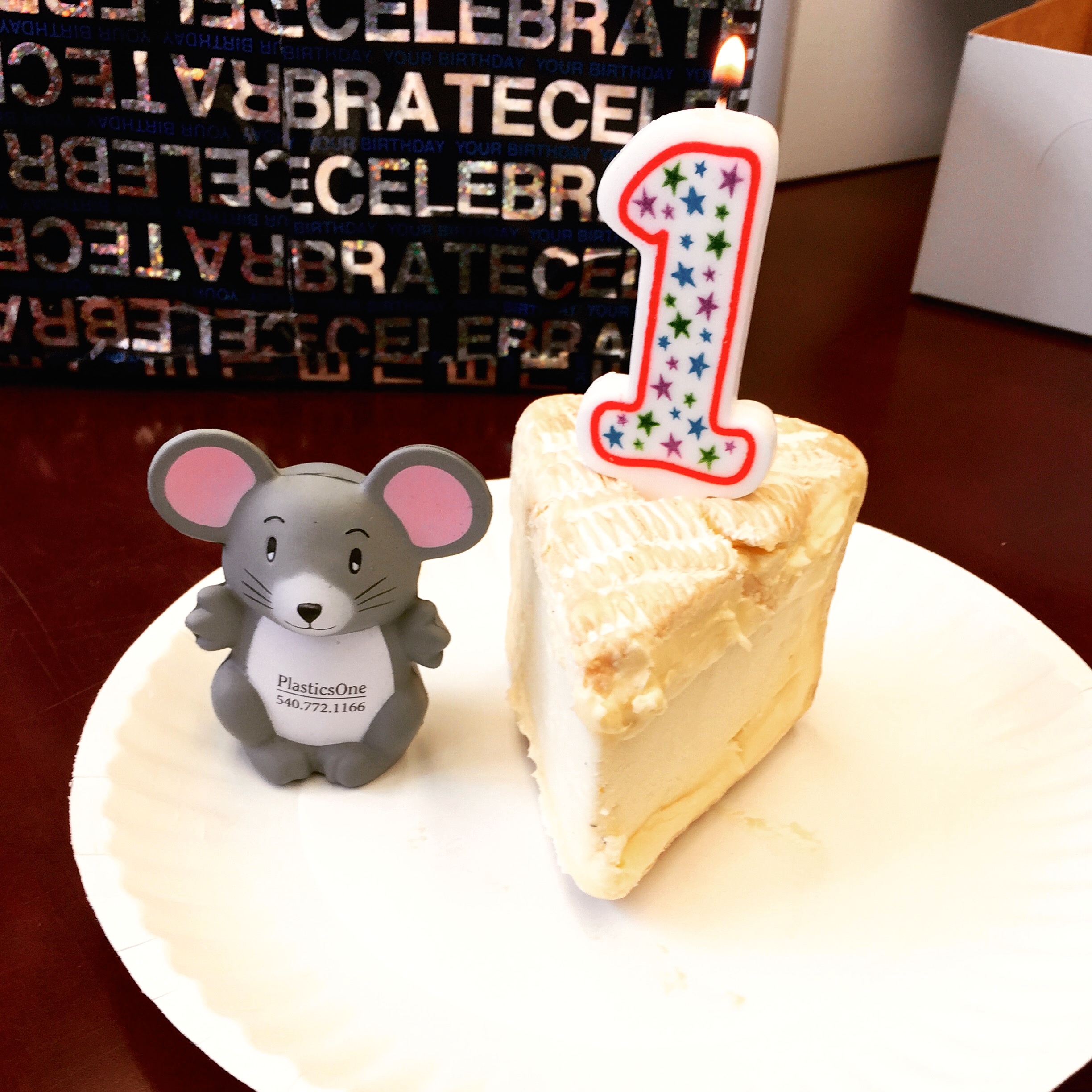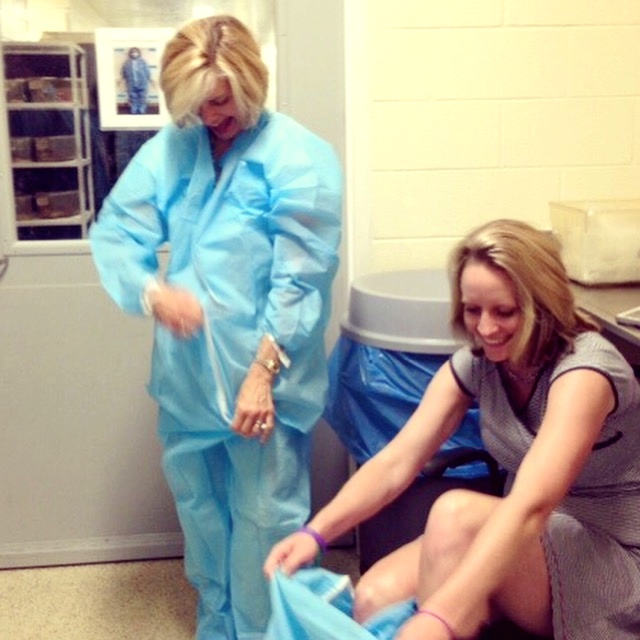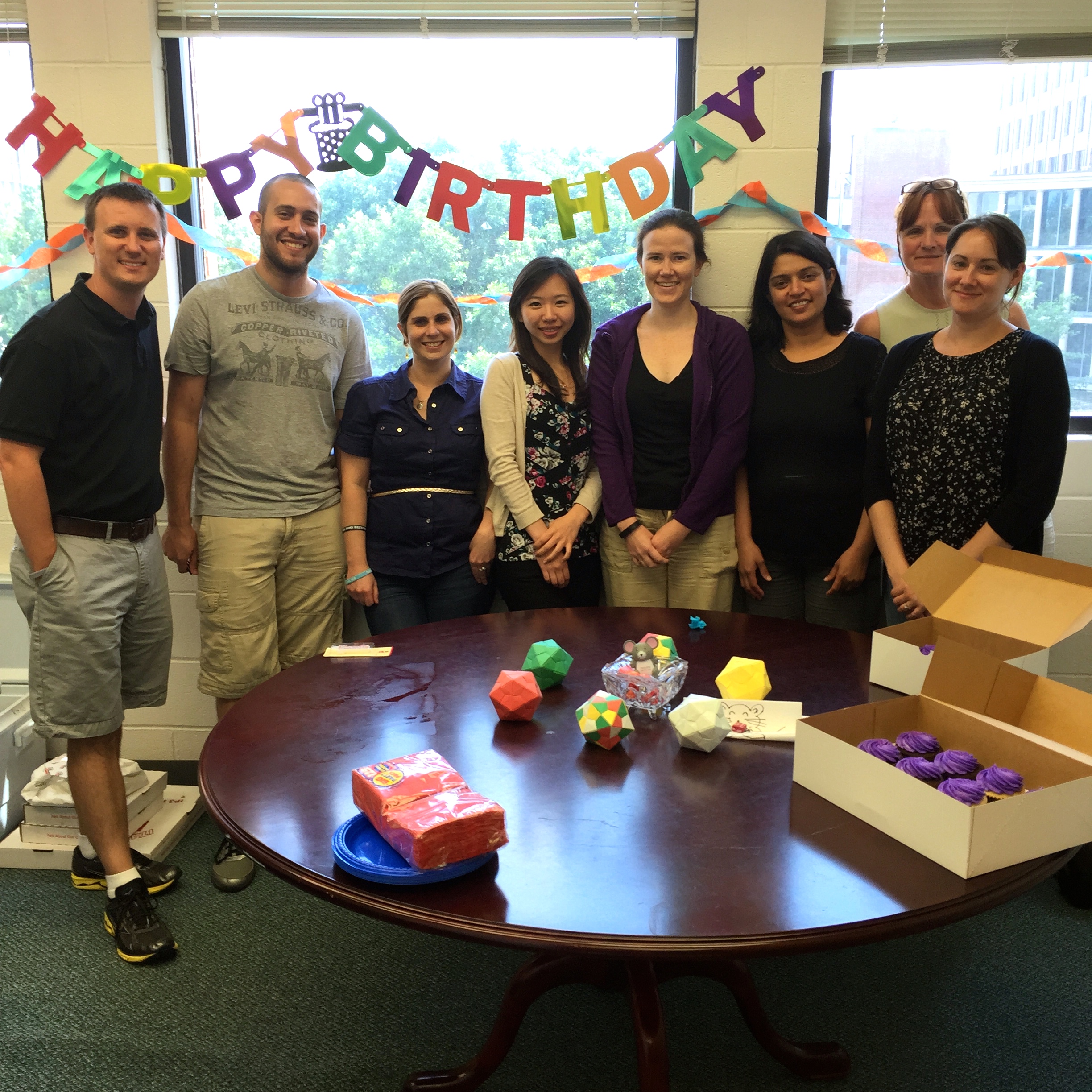Every time I visit Steve Gray and the University of North Carolina Gene Therapy Center, I want to run home and immediately write a blog post and email all of my media contacts and friends in the rare disease community and tell them what’s happening in a lab two hours from my hometown. I want to tell them Steve and his team are going to change the world.
But when I get home, I can’t find the right words, and instead I just scroll through my pictures and reread my notes and wonder how I can possibly feel so inspired knowing we’re too late to save my little sister.
It’s been nearly 24 hours since I arrived home from Chapel Hill, and I still can’t find the perfect words, so instead I think I’ll just say matter-of-factly that on Friday, June 19, we celebrated the first birthday of mice with infantile Batten disease, complete with a stinky wedge of cheese and a candle.
The mice weren’t supposed to make it to their first birthday. Mice with infantile Batten disease usually die after eight months. But the Gray Lab team treated the mice with gene therapy, and they’re doing so well that I had a difficult time noticing any symptoms of the disease (Mom and I donned bunny suits and visited the mice after pizza and sweets).
So, what does our little birthday party mean for the fight against infantile Batten disease?
- The gene therapy treatment is effective.
- The delivery method works.
- The treatment is translational to humans.
As far as I’m concerned, it was the world’s best first birthday party.
There isn’t a lot of glory associated with working in a science lab, but people like Steve Gray and his team are the reason why we can go to the drugstore for medicine or the hospital for treatments that make us well. They’re humble people – especially this crew – but I hope they know how proud we are to be part of a groundbreaking effort on behalf of children like Taylor. Working with them is an honor and a privilege.
This celebration marked a huge milestone in the fight against infantile Batten disease, but we still have a lot of work to do. The Gray Lab at the UNC Gene Therapy Center needs continued support to develop potentially lifesaving treatments for Batten disease and other devastating illnesses, including Rett Syndrome, Giant Axonal Neuropathy (GAN), Tay-Sachs, AGU and Krabbe.
You can help ensure the continued success of the Gray Lab’s leading-edge work on behalf of children like my little sister by making a tax-deductible donation to Taylor’s Tale. We’re committed to doing everything we can to help this amazing team get to the finish line. Thank you for your support! Give Now
Thank you to Steve Gray, Ale Rozenberg and the entire Gray Lab team for their talent, determination and hard work. Thank you for helping us believe.




4 Comments On “Gene Therapy and a Birthday Party”